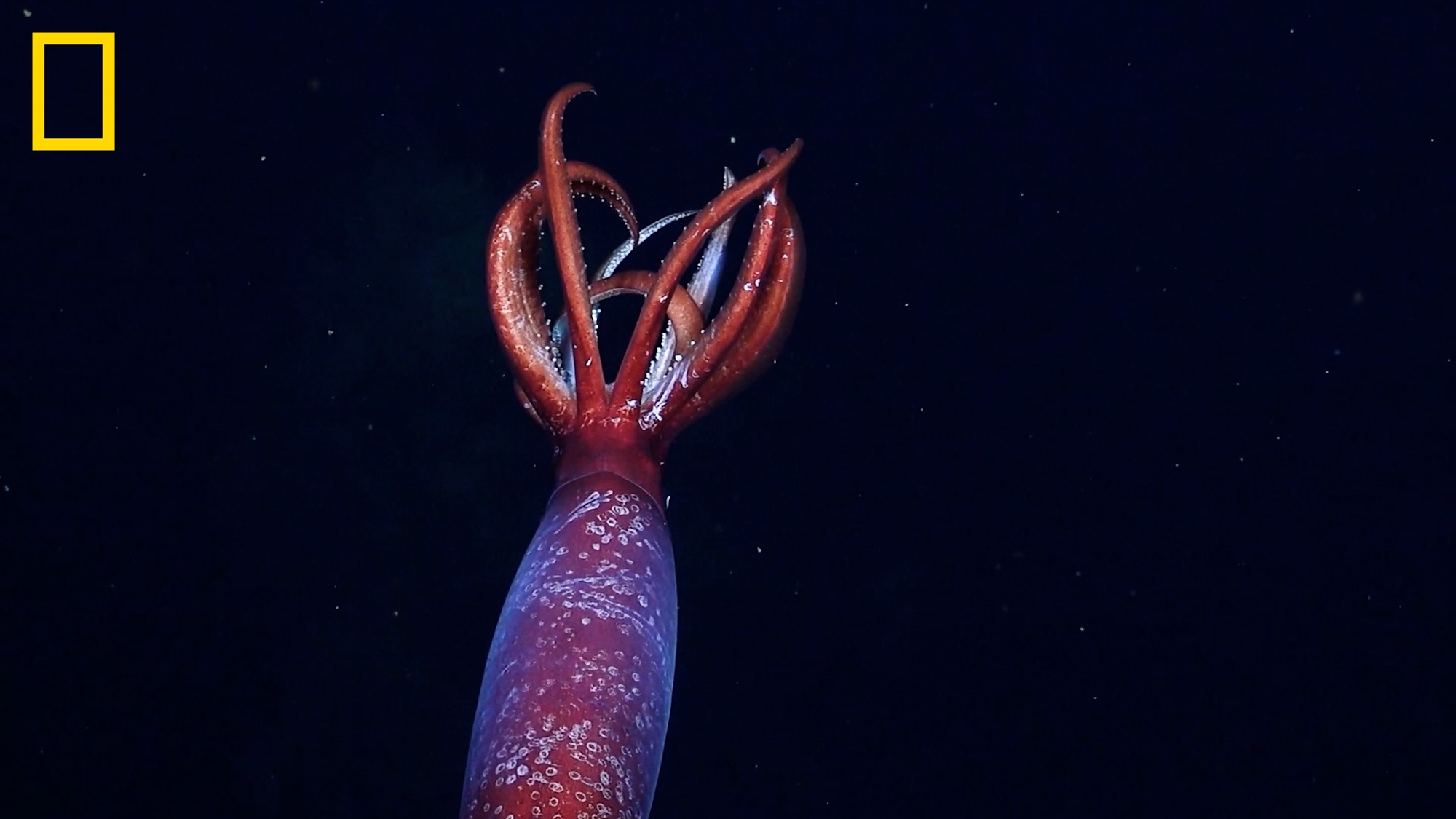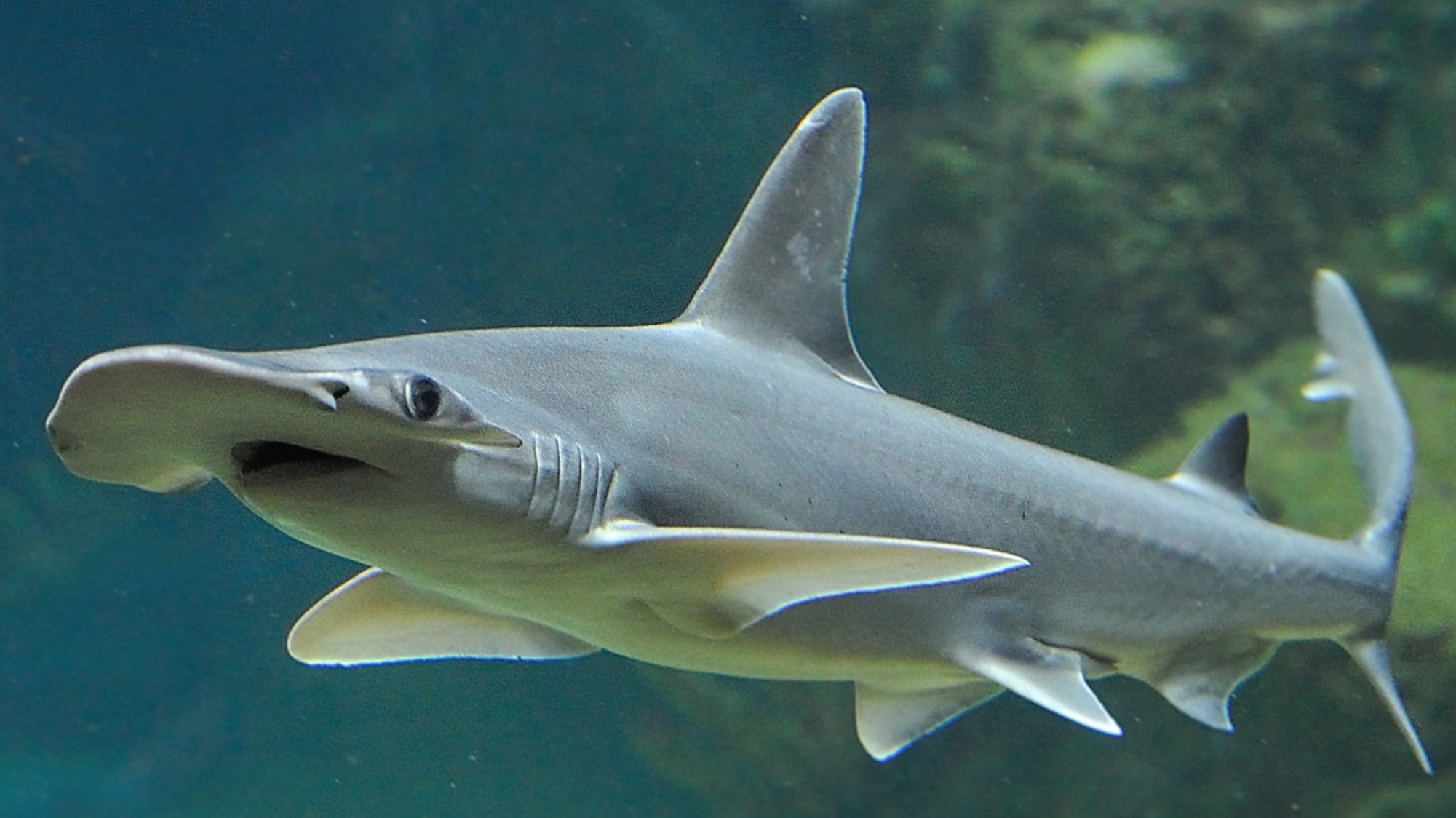Now Reading: Watch the mesmerizing first-ever footage of a rare Antarctic squid
-
01
Watch the mesmerizing first-ever footage of a rare Antarctic squid
Watch the mesmerizing first-ever footage of a rare Antarctic squid

Get the Popular Science daily newsletter💡
Breakthroughs, discoveries, and DIY tips sent every weekday.
Oceanographers on an excursion in the Southern Ocean captured a chance, unprecedented encounter with a sizable deep-sea squid. While piloting a remotely operated submersible 7,000 feet below the ocean surface from aboard the Schmidt Ocean Institute’s research vessel Falkor (too), experts glimpsed a three-foot-long Gonatus antarcticus specimen. But according to National Geographic’s announcement, the team wasn’t even supposed to be in that location when they stumbled across the elusive cephalopod.
“The ice blocks were moving so fast, it would put all the ships in danger, so we had to rearrange everything,” said Manuel Novillo, a researcher at the Instituto de Diversidad y Ecología Animal.
Novillo and his crewmates working on the National Geographic and Rolex Perpetual Planet Expedition originally intended to remotely explore the Powell Basin, an uncharted 9,400-foot-deep abyssal plain near Antarctica, on Christmas Eve last year. Inclement conditions and dangerous ice floes forced a change in plans. To cut their losses, researchers instead traveled to an outer edge of the Basin the following day to see what they could find.

The last-minute itinerary shift proved more surprising than anyone aboard Falkor (too) expected. Novillo noticed a shadowy figure near the vehicle’s camera as they guided the submersible deeper into the sunless depths early the next morning, and asked the pilot to try getting a closer look.
“Voilà, it appeared,” he recounted.
Novillo and colleagues were initially unsure about the exact species of squid. But whatever it was, it seemed as surprised to see the submersible as its operators were to find it—the squid released a small, green cloud of ink after noticing the robot visitor. Researchers analyzed the squid’s dimensions using the submersible’s laser measurement systems while recording a few minutes’ worth of video footage. After their brief rendezvous, the squid departed and zoomed away into the murky depths.
The oceanographers sent their data and images to Auckland University of Technology’s Lab for Cephalopod Ecology and Systematics (aka the AUT Squid Squad) to properly identify their mystery animal. After reviewing its size and physical characteristics, the AUT Squid Squad concluded that the team had captured the first-known meeting with a live G. antarcticus. Before this, the only specimens had come in the form of carcasses caught in fishing nets, or beak fragments found in other marine animals’ stomachs.
According to Kat Bolstad, head of the Lab for Cephalopod Ecology and Systematics, the telltale markers of G. antarcticus were a single, large hook found at the end of each of its longest tentacles.
“It’s not consistently visible, but it is definitely there,” Bolstad said of the hooks seen in the video.
The large Antarctic squid likely uses those large tentacle hooks to help capture meals, but beyond that, not much is known about the deep-sea creature. Experts assume daily life is likely a combination of hunting prey and avoiding its own larger predators, possibly even colossal squid. The cephalopods generally possess extremely good eyesight so that they can easily spot and avoid unwanted attention (such as a submersible’s headlights).

The specimen caught on camera displayed what appeared to be fresh scratches and sucker-induced wounds, hinting at a brush with its own hungry foes. Despite this, Bolstand said the bright coloration and size indicates it remained “in pretty good shape” since older squid tend to lose their vibrancy. The team wasn’t able to determine its sex, but if it was a female, it was nearly twice the size of past documented adult G. antarcticus. This raises the question: Do males retain their coloration throughout their lifecycles? Another explanation may be that G. antarcticus is actually multiple species, although more information is needed before making that determination.
In any case, the Christmas Day sighting marked an important moment in the study of deep-sea squid. It may be years before another specimen is seen on film, but for Novillo, the unlikely meetup is amazing enough on its own.
“What are the odds?” he said. “We were not supposed to be there and not at that precise moment.”
For more on this story, visit natgeo.com.

More deals, reviews, and buying guides
The PopSci team has tested hundreds of products and spent thousands of hours trying to find the best gear and gadgets you can buy.























